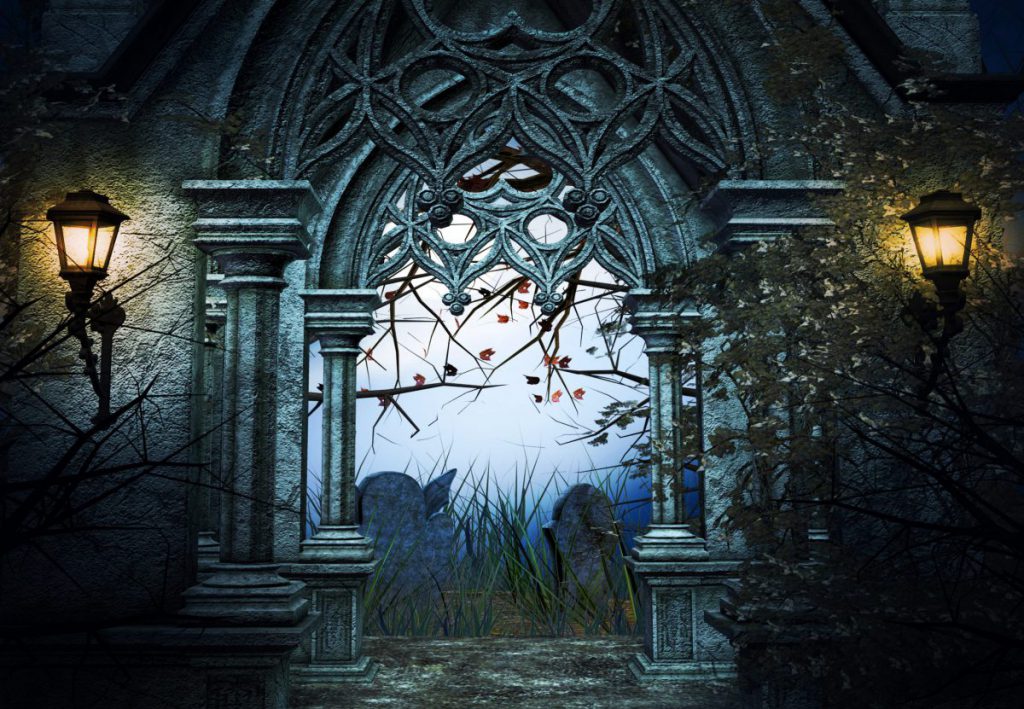Frankenstein, Dracula, The Phantom of the Opera. If you like stories full of atmosphere, horror, and bittersweet emotions, then you may enjoy a good Gothic story. That story may go back a few centuries or it may be completely modern. The characters will be dramatic, the language will be flowery, and the atmosphere will hang in the air, often quite literally as fog. Or snow. Madness abounds.
But what makes a story gothic? What drives people (like me!) to write gothic stories?
As far as I can tell, what makes a story gothic is something that’s often known as “making the setting a character.”
(I don’t like calling setting a character, though, because the setting itself rarely takes actions as a character would.)
In order for a gothic to feel properly atmospheric, horrific, and bittersweet, then the setting has to seem to come alive as the negative behaviors and emotions of one or more of the human characters are projected on the setting. (Projection here means unconsciously taking unwanted emotions or traits you don’t like about yourself and putting them onto someone or something else, such as saying that your car is “cranky” if it “acts up” at the same time you just happen to be having a stressful day.)
In other words, in a gothic story, some element of the setting has to personify the moods or personality of one or more of the characters.
All of which means that it was a dark and rainy night…when the gothic was born!
Frankenstein’s experiments happen in a coldly rational laboratory at a university in Switzerland; the frame story is told in the Arctic. The female monster is created on the Orkney Islands off the northern coast of Scotland. Dracula has his castle and Transylvania, but becomes his most suave and urbane in London. Jane Eyre features a house with a madwoman in the attic. The Stange Case of Dr Jekyll and Mr Hyde takes us back to the laboratory, and contrasts the upper and lower classes—and neighborhoods—around London. Rebecca’s heroine dreams of Manderlay (although I dream more of that evil sailboat), and Cathy haunts Wuthering Heights, even before her death.
The Haunting of Hill House is one of the best examples of a place that takes on a well-nigh human mood:
No live organism can continue for long to exist sanely under conditions of absolute reality; even larks and katydids are supposed, by some, to dream. Hill House, not sane, stood by itself against its hills, holding darkness within; it had stood for eighty years and might stand for eighty more. Within, walls continued upright, bricks met neatly, floors were firm, and doors were sensibly shut; silence lay steadily against the wood and stone of Hill House, and whatever walked there, walked alone.
The main character of the book, Eleanor, is a woman who is not allowed to have dreams of her own, living as the caretaker for her mother. She isn’t sane; she is isolated and holds her darkness within, appearing to be a perfectly ordinary, boring, very private woman. Whether or not the house is haunted is up for debate—but it is certain that it is Elenor’s sentiments that affect how the house was written.
If what makes a gothic a gothic is the setting, then it is the New York City apartment, elegant but sinister, that defines the events of Rosemary’s Baby; the decaying plantations and twisted, wrought-iron balconies of New Orleans that create Interview with the Vampire; even the tall pines and mist that created Twilight.
What makes a writer create a gothic, I think, is the desire to reveal some element of the truth of a situation to the reader, by making it external and obvious as part of the setting.
The virgins in white nightgowns flee from the castle because their so-called happy home is a place of entrapment and misery; Montressor can bury his enemy behind a wall in his endless wine cellar because of his wealth and privilege; Melmoth the Wanderer finds the other characters of the story all over the world, but mainly in monasteries and churches, as opposed to the paradisical island of his victim and lover, Isidora, written by a Protestant clergyman denouncing the evils of the Roman Catholic church.
Although, given that writers’ minds tend to wander, perhaps it is the reverse, with the author starting with a setting and trying to explain the creepy feeling they get there, and building characters that justify that feeling, as when Southern Gothic writers write about the South. (Or other regional gothic writers write about their homes!)
At any rate, whether the source of the atmosphere comes from the characters projecting onto the setting or the setting projecting characters to create the right atmosphere, the truth behind the setting will come out.


